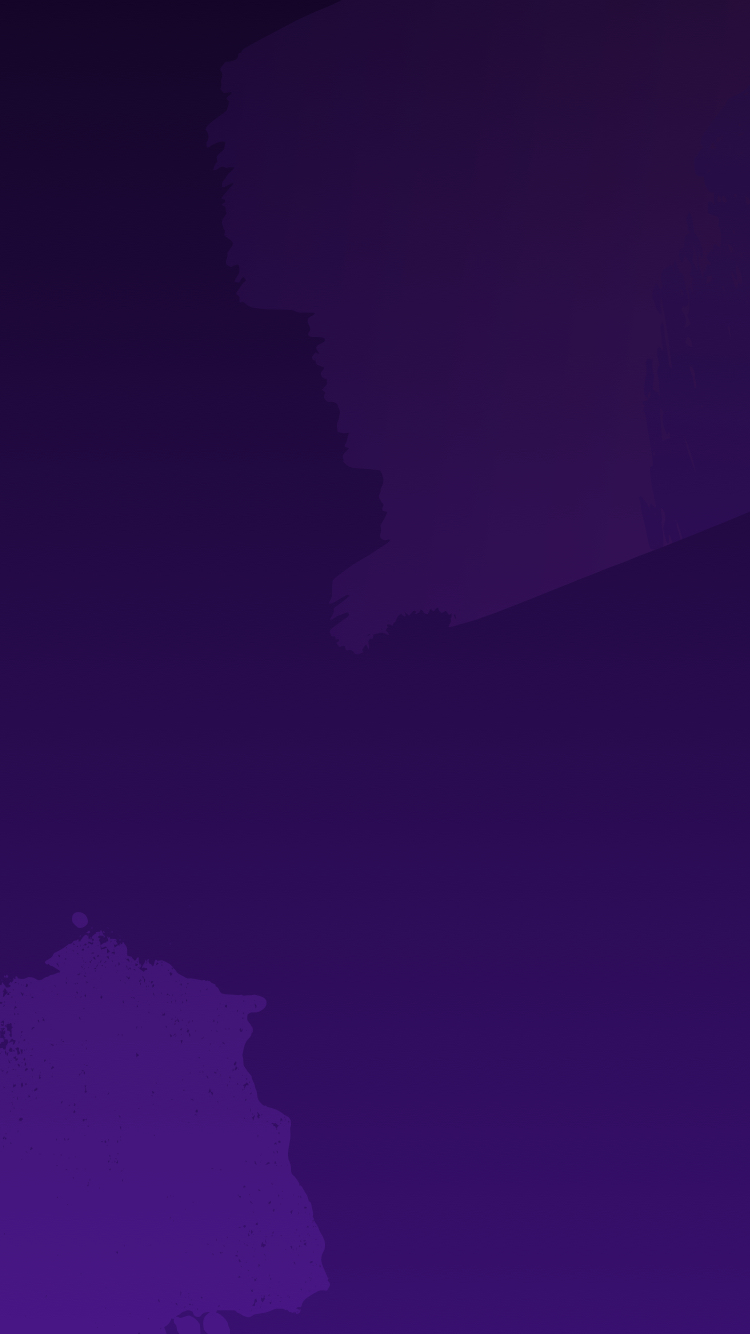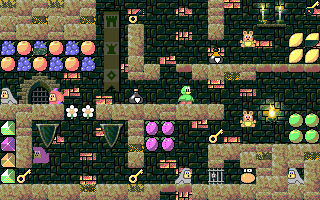Welcome to part two of our look back at the games of Team17, following our 100th release, PLANET ALPHA! In this chapter, we’re taking a look at 1993, a bumper year for Team17 with a whopping nine releases, including several new IP, more third party releases and our first proper sequel!
Missed part one, focused on 1991 & 1992? Check it out here.
6/100
BODY BLOWS
Year: 1993 | Developer: Team17 | Publisher: Team17 | Format: Amiga, PC
As Team17 grew in the early Nineties, we gradually took on more development staff, and one of the first new recruits to join was Danny Burke, a young artist with a love for arcade fighting games. Fresh out of art college, Burke was a big fan of Team17’s early Amiga games and so decided to approach the studio with his own concept: A one-on-one fighting game by the name of Body Blows…
“I’d made a pretty short animation of Dan and Nik fighting, with no background, which I sent to Team17,” says Burke. “Team17 responded very quickly and I met up with Martyn Brown and Junior McMillan (the programmer) in a London pub within a week of sending the demo. My friend, who ended up doing the sound effects for Body Blows with his brother, also came to the meeting. I remember we were both so excited and couldn’t believe things were happening so fast.”

Fighting games were big business in the early nineties, and with US Gold’s Street Fighter II port not yet released on Amiga (and expected to be less than arcade perfect) the team were keen to take advantage of the window of opportunity. Despite the obvious comparisons, however, Burke was actually inspired by SNK’s visually impressive Fatal Fury on the Neo Geo. “I remember Martyn and Junior both saying that I’d have to make the characters a bit smaller!”
Creating an arcade quality fighting game on the humble Amiga 500 was never going to be an easy task, even without the pressure of adapting a famous coin-op. The Amiga could display 32 colours on screen at once, and with half of those used for the backgrounds, the remaining 16 had to be used for any possible combination of two characters. Not to mention that the Amiga joystick featured only one button, so special moves had to be performed with a directional push of the stick in conjunction with a button press. “I think we found the best solution to allow players to do more moves,” adds Burke, who also credits programmer Junior McMillan. “He made an animation/hit box editor which was extremely useful.”
The hard work paid off. Body Blows was another hit with reviewers, earning up to 93% in Amiga magazines and was popular enough with players to earn two sequels. “I was really happy with the finished product,” concludes Burke.
7/100
SUPERFROG
Year: 1993 | Developer: Team17 | Publisher: Team17 | Format: Amiga, CD32, PC
The next game from the Alien Breed team, Superfrog could not have been more different. It practically leapt from the screen with its vibrant colours, speedy gameplay and jolly soundtrack, and looks like it would have been great fun to create. “Fun is an understatement” enthuses programmer Andreas Tadic. “With Superfrog we again got the chance to do something in a genre we loved.”
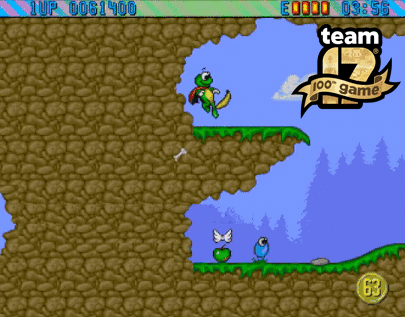
While Body Blows followed hot on the heels of Street Fighter II and Neo Geo, Superfrog was in turn inspired by another pair of Japanese phenomenon. “Yes, it was indeed a mix of both Sonic the Hedgehog and Super Mario,” reveals Tadic, to the surprise of no one! “We aimed to be neither, but to create something of their kind that was unique on Amiga. Looking back, it was probably the hardest game to make. Making the ground collision work as expected with as few CPU cycles as possible, and the fast 360 degree scrolling, for example. It was challenging but I think we managed to get there in the end.”
“The music was inspired by Rob Hubbard, the well known C64 composer,” says Allister Brimble, who composed eight unique tracks, in a style unlike any previous Team17 score. “I really enjoyed working on Superfrog, especially as the whole development team worked at my house in Devon for a week. It was amazing to see Andreas Tadic and Rico Holmes (artist) in action. Andreas had to make changes to the sound code, so had a go in my computer room. I went to bed at 11pm and came back in the morning. He was still working on it!”
As well as super smooth gameplay and an effervescent soundtrack, Superfrog also boasted cartoon quality graphics, and boasted an amazing animated intro sequence, created by Eric Schwartz, an animation guru very well known among Amiga enthusiasts. Schwartz became aware of the game when he was contacted by Team17’s Martyn Brown by post. “I’d never had an opportunity like that, so I agreed,” says Schwartz, who next received a gameplay description and floppy disk containing screenshot mock-ups, but no gameplay sample from which to take inspiration.
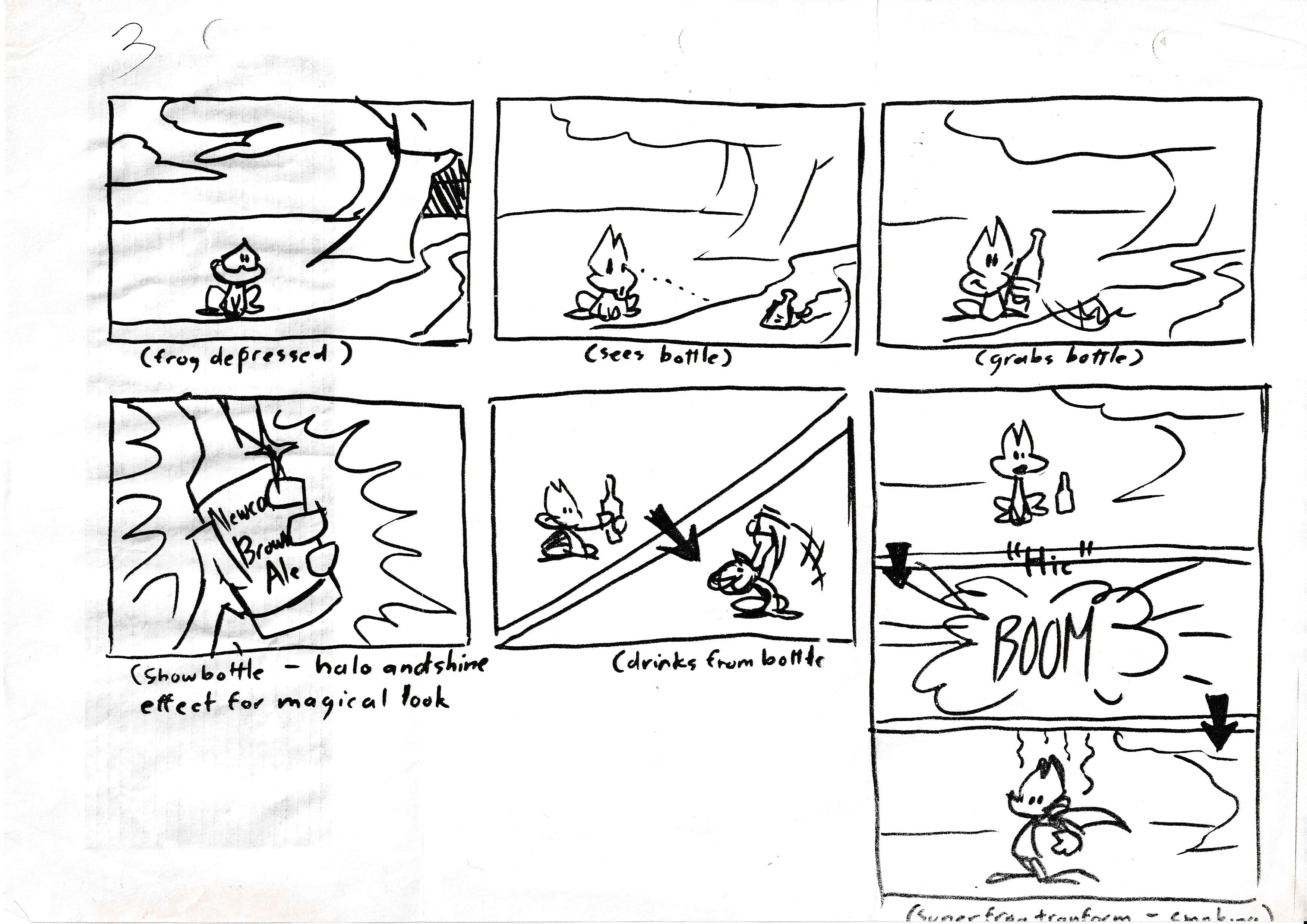
Eric Schwartz’s original storyboards (recently found by Allister Brimble in his loft) showing that Newcastle Brown Ale, rather than Lucozade, was the originally intended source of Superfrog’s power.
Schwartz was given almost total freedom to produce the animation, although he does reveal that some changes were made before the game hit store shelves. “In the early design concepts from Team17, Superfrog gained his powers by drinking Newcastle Brown Ale, before it was changed to Lucozade. A joke cameo by Sonic the Hedgehog was also removed!” Both changes that were probably for the best!
8/100
PROJECT X SPECIAL EDITION
Year: 1993 | Developer: Team17 | Publisher: Team17 | Format: Amiga, CD32
As Alien Breed Special Edition had worked so well the year before, Project X was next to get the budget re-release treatment. Rather than packing the game with new content, however, the focus on Project X Special Edition was to reduce the brutal difficulty of the original…
“All credit to Team17 for listening to the punters and accepting that unless you were Jet out of Gladiators then you wouldn’t even get to load up disk three,” wrote The One Amiga’s Simon Byron in a review that could only have been published in 1993.
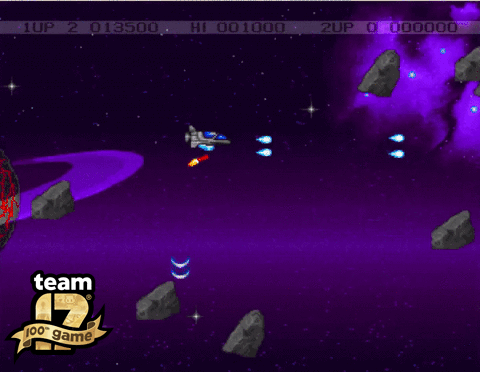
For the Special Edition, Project X’s levels were made a little shorter, certain enemy waves were removed, the ship started in a more powered up state and a new Rookie difficulty mode was introduced. All in all, this made the game a more satisfying experience and made it more likely that players could play through to the end. Which we’re sure you’ll agree is a very good thing! Reviewers agreed too, with an average score of around 4% higher across the board. Which might not seem like much but it did bump the game into the 90% average range, cementing Project X as another Amiga classic.
9/100
F17 CHALLENGE
Year: 1993 | Developer: Holodream | Publisher: Team17 | Format: Amiga, CD32
F17 Challenge was Team17’s first racing game and its second title from an external developer, Italy’s own Holodream, who had already produced Top Wrestling for local publisher Genias and had begun work on the next game in their “Top Sports” series, then called Top F1 Challenge.
“Although the first demo, basically a proof of concept, was really appreciated by Genias, we didn’t find an economic arrangement and decided to complete the game at our own financial risk, while hunting for a new publisher,” recalls artist-designer Raffaele Valensise. “We finally managed to show a more complete demo to Team17, when a friend of ours met Martyn Brown during the European Computer Trade Show (ECTS) in London and gave him a floppy disk with our demo. The rest is history!”
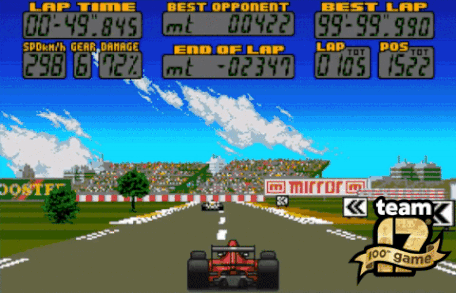
How did an Italian team work with a UK publisher in the early Nineties? Actually, it wasn’t that different to today. Holodream would send weekly builds of the game to Team17 via (a presumably very slow) modem, the build would be thoroughly tested by T17’s QA team, then affectionately named The Wolves, and bug reports sent back to Holodream. This went on until one day, Holodream received a fax (yes, a fax) from Martyn Brown, declaring the game “Finito!”
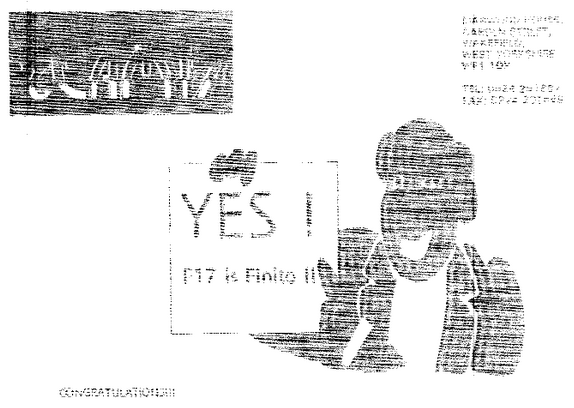
A snippet from the original fax sent to Holodream when F17 Challenge was finished.
Valensise had already made an F1 game before, with F1 Manager by Synergy Software in 1989, but for F17 he wanted to create something more arcade-like. “Basically I learned how not to make a racing game!” he reveals when we ask how F1 Manager influenced F17 Challenge. “The first experience was a bit disappointing to me since we did not achieve the arcade style we had in mind. So, with F17 Challenge we did a huge pre-production job in studying other racing games, taking inspiration from their look and feel and figuring out the programming techniques that was behind those games.” We struggled a lot with the creation of a graphically enjoyable road,” Valensise adds before pointing us in the direction of an article on the topic that, on length alone, suggests this may have indeed been tricky to pull off!
“F17 Challenge is the game I’m most proud of,” Valensise concludes. “It came out exactly the way I designed it. Nicola Tomljanovich’s music is epic. Fabrizio Farenga did a wonderful job coding the game. Alfredo Siragusa’s graphics and cars animations are still remembered by Amiga fans. And, most of all, we worked with Team 17!”
10/100
QWAK
Year: 1993 | Developer: Jamie Woodhouse | Publisher: Team17 | Format: Amiga, CD32
Remake available at MrQwak.com*
Superfrog wasn’t the only platformer we released in 1993. As well as a green frog, we also had a little green duck in Qwak! Developed by Sheffield’s own Jamie Woodhouse, Qwak’s roots go back much further than the mascot platformers of the Nineties and was instead inspired by Eighties arcade games and even started life as a little known 8-bit version on the BBC Micro.
“I used to go to amusement arcades a lot as a kid,” says Woodhouse. “I would have played loads of old platform games in the arcade and at home. I’d played Bubble Bobble of course, but also I played Flicky quite a bit, and no doubt countless others. I wouldn’t attribute inspiration for Qwak to any one game, it was more a mish-mash based on my general experience and put together with my own creative juices flowing.”
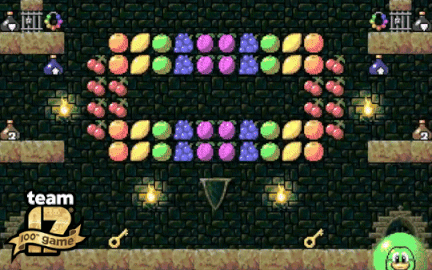
Like its arcade inspirations, Qwak was a “single screen” platform game (no scrolling) where the objective was to collect enough keys to open the exit while also avoiding enemies. Some nice touches, such as random falling objects – both harmful and helpful – a power-up that gave the duck a propeller hat to fly around with, and the ability to hop on bubbles and ride them up the screen, as well as simultaneous 2-player action, made Qwak instantly appealing and imminently replayable.
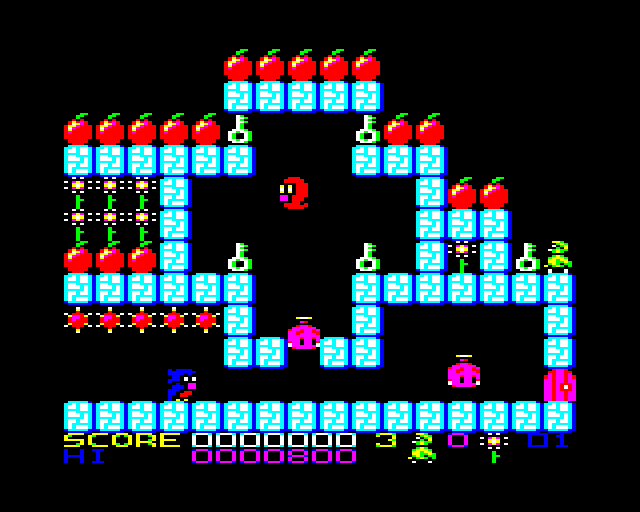
The original BBC Micro version of Qwak, published by Superior Software
After the BBC Micro version, which featured simpler graphics and a few minor differences – the ducks throw bubbles rather than bouncy eggs – Woodhouse started work on the Amiga version and began looking for a publisher. Much like the other developers we’ve interviewed for this series, he met Team17 at a trade show in London and soon struck up a partnership with his fellow Yorkshire developers.
“It was a fun game to work on,” says Woodhouse. “People in the Team17 office seemed genuinely interested and had fun playing the game. I like Qwak’s problem-solving puzzle element, so it’s not just about action, it’s about thinking and doing things in the right order. Overall, I felt as a complete package it fit together really well. All the component parts work together just right.”
Though not the most well-known game in Team17’s back catalogue, Qwak is one we urge any old-school arcade fans to track down and play as we really think they’ll have a great time. Don’t believe us? Take it from Stuart Campbell… “It could almost have been written by the same people who brought you Bubble Bobble, Rainbow Islands and Parasol Stars,” he wrote in his 1993 Amiga Power review, “and that’s just about the highest recommendation I can think of.”
11/100
CARDIAXX
Year: 1993 | Developer: Eclipse Design | Publisher: Team17 | Format: Amiga
After the success of Project X, and the general popularity of the genre, it was probably inevitable that Team17 would look to publish more shoot-em-ups on the Amiga, and we found our next one when we published the budget re-release of Cardiaxx by Eclipse Design..
“I grew up playing games in the arcades and on the C64, and loved games such as Scramble, Defender, Uridium, R-Type, and all the Jeff Minter games,” says programmer Dave Mariner. “Cardiaxx was the product of myself, an old mate Jon Mitchell, and a really clever young chap who came on board called Joe Karthauser. We all came from the demoscene, and were long-term residents on Compunet – the internet before the internet! The choice to develop on Amiga was pretty simple. It was the only machine with the performance capable of delivering the game we had in mind, not to mention we each owned one!”
“With Cardiaxx, we wanted to write a hard-as-nails blend of Defender and R-Type. All with a driving heavy metal soundtrack,” Mariner recalls. “We wanted it to be super-slick and the kind of game that gave you an adrenaline rush when you got into ‘the zone.’ When I look back now, I honestly believe we delivered on that. Reviews were really divisive, and to be honest I can understand why. It was super-difficult to play, and you needed the reactions of a god to complete it.”
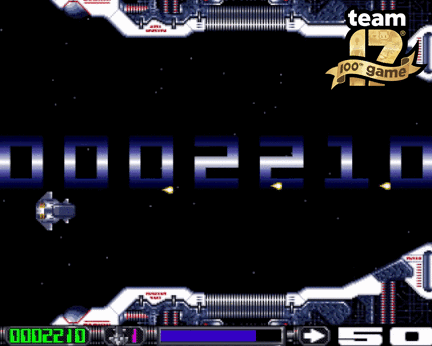
Difficulty wasn’t the only thing reviewers picked up on. Some also questioned the extremely unusual decision to display the player’s score so prominently, right in the middle of the screen and in the background of the gameplay. Mariner laughs, “Sooooo… I guess that was my doing. Since we’d come from the demoscene, we wanted to squeeze every last bit of performance out of the Amiga and this was my attempt at creating a readable HUD without the need to look away from the action. There was a neat trick on the Amiga where you could do stuff like that using what’s called a ‘copper list.’ The top and bottom background graphics are actually a reflection, and there was this space between them. I can’t entirely remember how it came about, it was probably the result of a bet over a beer about whether I could squeeze a huge score in the middle!”
Though not quite a “Special Edition”, Team17’s budget re-release of Cardiaxx did also bring a handful of changes to the original game, including some new levels. “All the changes for the re-release came from our side,” Mariner clarifies. “There were some Amiga 1200 compatibility issues to deal with, but the biggest thing for me for the was the ability to undo the last-minute change to the controls forced on us by the original publisher. Our original vision was to have a really fluid control mechanic where you really felt like you were part of the game. But when the preview versions went out to reviewers, one of them stated that you didn’t see enough of where you’d come from when the ship reversed direction. The CEO of the original publisher gave the directive that we had to fix it, and fix it quickly! We ‘fixed’ the issue, but this completely broke the flow of the game. The whole team was really unhappy about it, but we were completely burned out by then and didn’t have the energy to fight for how we felt it should be. For the T17 release, I simply undid those changes and all was right again with the world (of Cardiaxx)!”
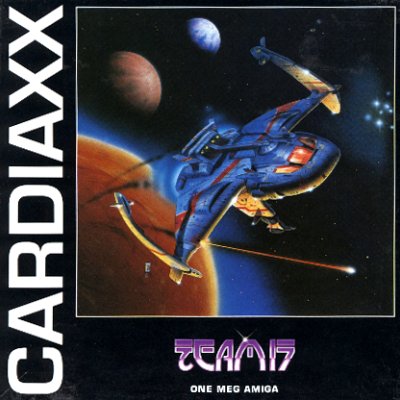
25 years later, Mariner remains proud of Cardiaxx but has moved on from games development to more altruistic business. “Having spent most of the past 30 years working in the industry, I felt it was time to give back. Together with some other amazing industry veterans, we’ve built Karmafy – a games-focused platform that lets players support good causes for free, simply by playing games, and find out the difference their playing makes in the world.”
12/100
OVERDRIVE
Year: 1993 | Developer: Psionic Systems | Publisher: Team17 | Format: Amiga, PC
Our second racing game, this time a top-down racer as was a trend at the time, Overdrive was the next project from Psionic Systems – the team behind Assassin.
“Overdrive in some ways was more challenging than Assassin,” says coder David Broadhurst. “The cars had to be drawn at the same speed as the background since the 25fps hack started to look bad when the screen scrolled quickly. The AI was also more complex. Trying to give the player just enough of a challenge was tricky.”
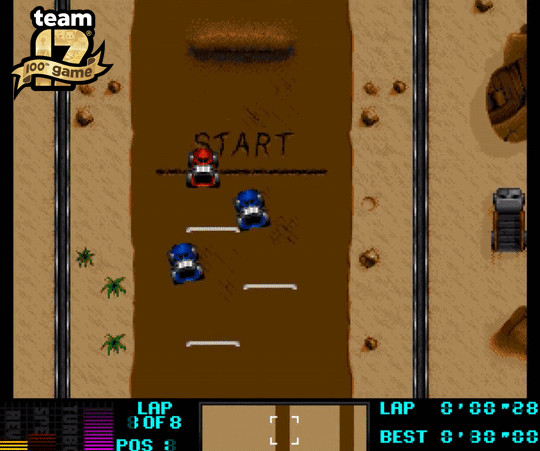
“We also built a 2-player head to head mode where players could connect two Amigas together with a serial cable,” adds Broadhurst. “This was fun to make and play but I doubt many players were able to try it!” Unfortunately for us (but much to the delight of gamers) Codemasters’ excellent Micro Machines arrived on Amiga exactly one month before Overdrive and featured an innovative way to let multiple players race on the same screen without the need for a system link, which rather took the shine off Overdrive. Psionic’s racer still performed well in reviews, however, and proved popular with fans. If only we’d released it a couple of months earlier!
13/100
ALIEN BREED II: THE HORROR CONTINUES
Year: 1993 | Developer: Team17 | Publisher: Team17 | Format: Amiga, CD32
After the phenomenal success of Alien Breed: Special Edition, a full sequel quickly followed with Alien Breed II arriving in two versions – one for regular Amigas and one enhanced for the fancy new “AGA” Amigas released in 1992.
It was great that we could now code for the new AGA chipset, which had a lot of goodies in it for all of us to play with,” says programmer Andreas Tadic. “Actually using that and being able to up the game quality/graphics was fun all the way through. We did have to revisit the hardware manuals to learn the new AGA bits, but that was probably good for me!”
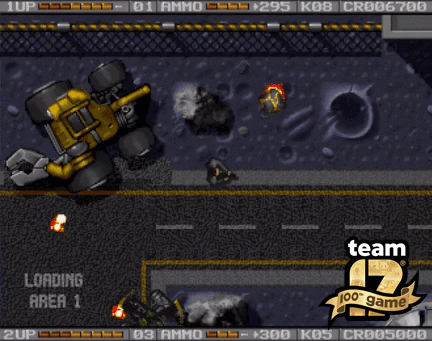
As well as the snazzy new graphics, Alien Breed II featured 14 brand new areas to explore and increased the playable characters from two to four, adding in a lizard and robot to make the character choice a little more varied. Rather than start inside a base or space station, Alien Breed II drops the player on the surface of a planet and challenges them to make their way indoors while avoiding insta-kill helicopters. Once through that ordeal, however, Alien Breed fans found the same intense action they’d enjoyed so much the first time around and reviews, yet again, were extremely positive. In fact, Yugoslavian magazine Amiga Style even awarded the game a full 100%. Thanks Yugoslavia!
14/100
SILVERBALL
Year: 1993 | Developer: Epic MegaGames | Publisher: Team17 | Format: PC
Some tables adapted from Epic Pinball, available on GOG.com**
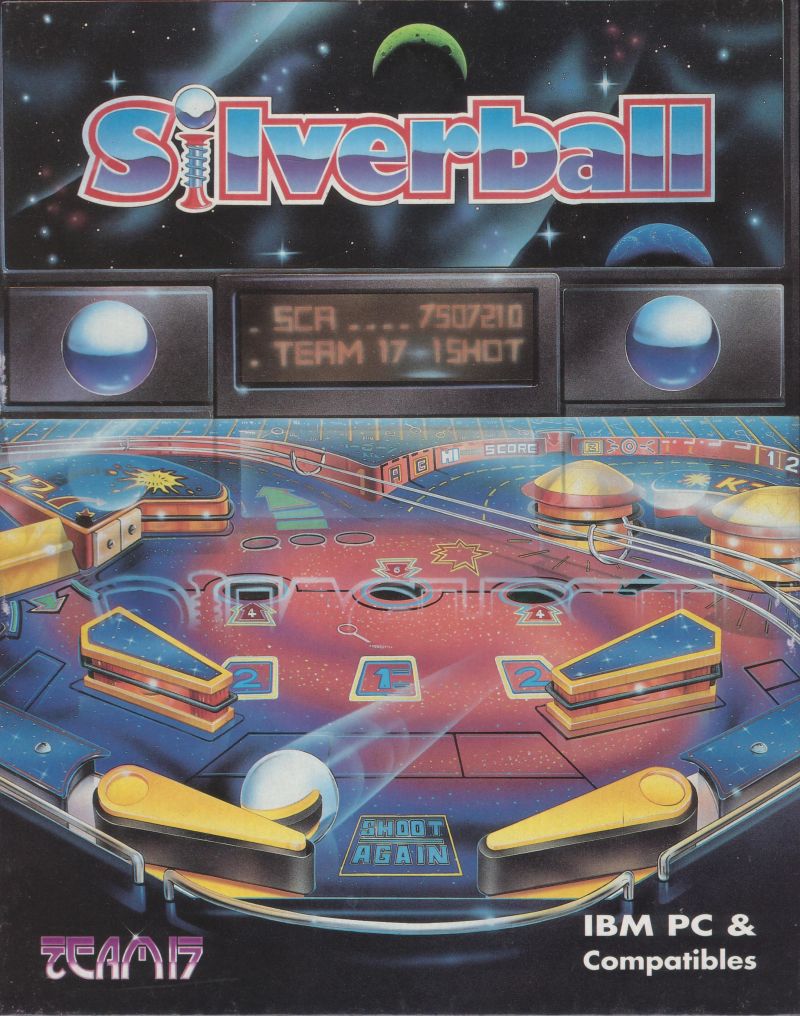 Did you know we once published a game by Epic! Well… We did! In 1993, Team17 picked up the European publishing rights to Silverball, a collection of digital pinball tables previously released as shareware disks – something very close to our 17-Bit Software roots. The game was also our very first PC exclusive, an early sign of the move away from the Amiga – though that wouldn’t happen for a few years yet.
Did you know we once published a game by Epic! Well… We did! In 1993, Team17 picked up the European publishing rights to Silverball, a collection of digital pinball tables previously released as shareware disks – something very close to our 17-Bit Software roots. The game was also our very first PC exclusive, an early sign of the move away from the Amiga – though that wouldn’t happen for a few years yet.
We never did publish another Epic game but our relationship with the company remains strong to this day. In fact, our 100th release PLANET ALPHA looks as beautiful as it does in part due to the power of Epic’s Unreal Engine.
This concludes our look back at the Team17 games of 1993. Don’t forget you can read up on the games of 1991 & ’92 here, and check the next chapter for a look at 1994, including two more Body Blows games, Super Stardust and Alien Breed: Tower Assault!
*Please note that the remake of Qwak is an independent release from the original developer,
Jamie Woodhouse, and is not published by Team17 ** Epic Pinball is developed and published by Epic and not associated with Team17
